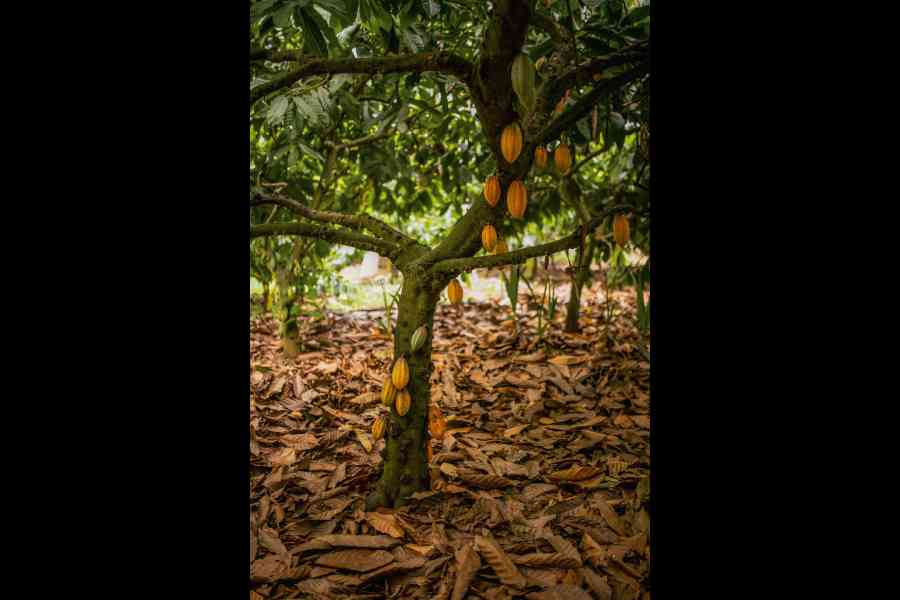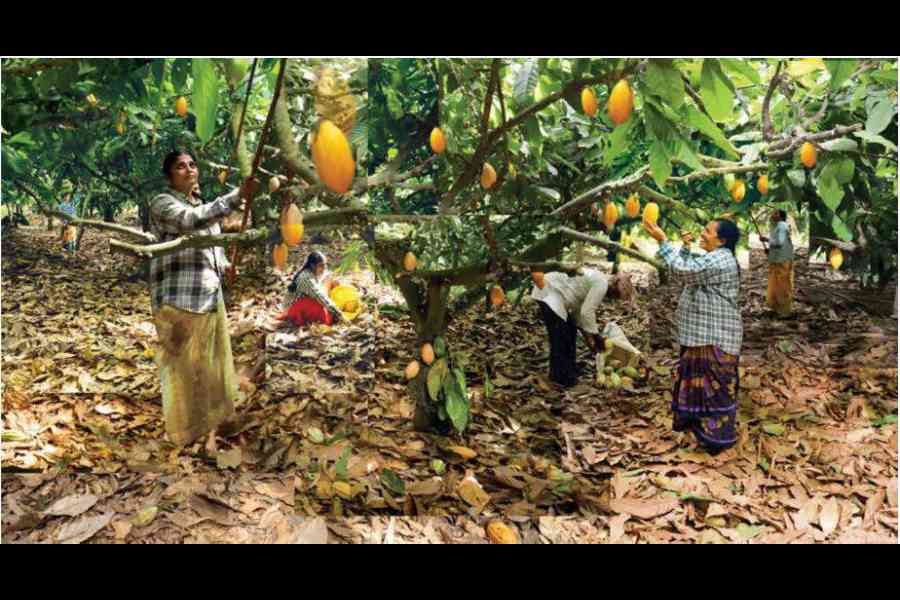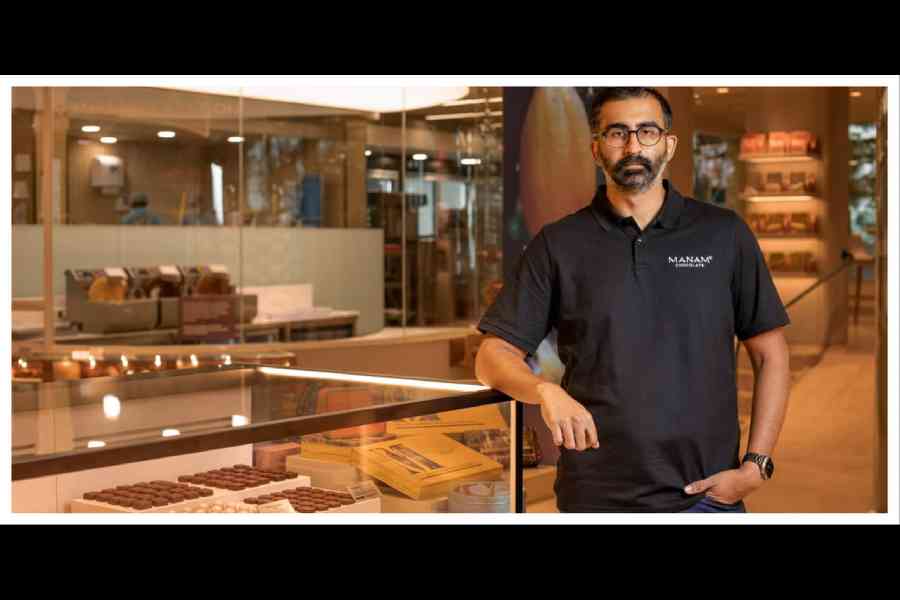Have you ever thought about how a luscious bar of chocolate is made before it’s packed in shining wrappers? Well, this t2 girl had an opportunity to experience it first-hand. Somewhere around mid-March, I received the ‘golden ticket’ to visit the world of Manam Chocolate — a pioneering Indian craft chocolate brand, which is managing the entire process from cacao farming to creating exquisite confections. Their journey begins with Distinct Origins, collaborating with over 100 farmers across 1,500 acres in Andhra Pradesh’s West Godavari district, India’s largest cacao region. Manam Chocolate steps in with science-based methods and proprietary technology to reshape the chocolate industry at its advanced Cacao Fermentery. Manam Chocolate’s comprehensive approach and innovative techniques position it at the forefront of India’s burgeoning craft chocolate movement.
A brainchild of Chaitanya Muppala, founder of Manam Chocolate, and CEO of Distinct Origins, he began his career at Almond House, a prestigious, 30-year-old Indian food brand renowned for its premium sweets and savouries in Hyderabad. At the young age of 24, he took over the company, infusing it with fresh ideas and a modern approach to the traditional Indian mithai business. In 2018, Chaitanya’s quest for quality Indian chocolate marked a turning point. He discovered the distinction between industrial and craft chocolate, which inspired him to develop a business model centred on fine-flavour Indian Craft Chocolate. By 2021, Chaitanya founded Distinct Origins to position the West Godavari region as a prime source for global craft chocolate makers seeking fine-flavour cacao beans. He began constructing India’s largest fine-flavour cacao fermentary in Tadikalapudi, West Godavari, Andhra Pradesh.
During this period, Chaitanya successfully collaborated with over 100 cacao farmers, covering 1,500 acres in what is now considered India’s largest cacao-growing area.
Simultaneously, he embarked on developing Manam Chocolate, a brand that represents the potential of craft chocolate. His dedication and expertise were recognised as he became certified at Levels 1, 2 and 3 in Chocolate Tasting by the International Institute of Chocolate and Cacao Tasting (IICCT, USA), making him India’s first Level 3 Certified Chocolate Taster. Manam Chocolate was launched successfully in August 2023, showcasing Chaitanya’s vision and commitment to elevate the Indian chocolate industry.
Visiting West Goadavari’s cocoa farms, Distinct Origins fermentary and Manam Chocolate’s factory in Hyderabad, provided an enlightening experience on the intricate process of transforming cocoa beans into luscious chocolate bars. My journey began on the first day at 7.30am, from Hyderabad to West Godavari’s lush cocoa plantations, where I witnessed the careful cultivation of cocoa trees. Local farmers meticulously tended the pods, which were later harvested and split open to reveal the citrusy beans inside. After a farm-fresh breakfast, the next stop was the Distinct Origins fermentary, a critical stage in developing the beans’ rich flavours. We observed the different stages of cocoa bean fermentation from the beans being cracked open from the cocoa pod to being piled into wooden boxes, covered with banana leaves and left to ferment for several days. This natural fermentation process involved constant monitoring to ensure the right temperature and conditions, allowing the beans to develop complex flavour profiles.
Finally, the tour concluded on the second day at the chocolate factory at Banjara Hills, Hyderabad, called the Manam Chocolate Karkhana (manam meaning we or us in Telugu), where the beans underwent several stages of drying, roasting, and grinding. We marvelled at the precision required in each step, from winnowing to removing the husks to refining and conching the cocoa mass to achieve a silky texture. The meticulous tempering process ensured a glossy finish and satisfying snap in the final chocolate bars. Here’s a walkthrough.

CACAO FARMING
Cacao Harvesting: Harvesting cacao beans at the right time is essential for enhancing the flavour of the chocolate. Theobroma cacao trees begin to bear fruit around three years old, producing 20 to 30 pods each. It takes approximately four months for a cacao pod to ripen from flower to fruit, ensuring the best development of flavour compounds essential for high-quality chocolate. This meticulous, time-intensive harvesting process is crucial for maintaining the superior taste of the chocolate products.
“Manam Chocolate demonstrates just how versatile Indian cacao can be. We are exploring the endless possibilities of this magic ingredient that goes beyond bean-to-bar. With a wide range of unique craft chocolate experiences, spanning over 250 concepts across 50 different categories, we are showcasing the true potential of cacao in a way that’s never been done before. Our products range from familiar flavours to novel to experimental, a whole new world of chocolate waiting to be discovered. Signature Tablets. Bonbons. Truffles. Nama. Barks. Fudge. Palettes. Rochers. Clusters. Macarons. Gianduja. Spreads. Cakes. Pastries. Viennoiserie. Hot and Cold Beverages. A range of ingredients for bakers. And much, much more. Craft chocolate is extremely nascent globally and that allows us to lead, not despite being in India but because of it. The urban Indian consumer market and its aspirational nature is a fertile environment for us to do what we aim to do: build a new category for chocolate both in India and globally,” said Chaitanya Muppala, founder of Manam Chocolate, and CEO of Distinct Origins.

Cacao picking: The harvest of cacao pods requires precise timing to ensure quality and prevent premature germination. Each pod on a cacao tree matures at different times. Farmers make sure of the peak ripeness by observing the pod’s colour change from red to green, then purple, and finally yellow, indicating it is ready for harvest. A tapping test is performed to listen to the sound of loose seeds inside the pod, signifying ripeness. Harvesting is done manually using a pruning hook to make a clean cut through the tree stalk without damaging the flowering area, which is crucial for future pod growth.

After getting tired of tasting sinful chocolates, Manam Cafe awaited us with global comfort food reimagined with local ingredients and Indian-inspired flavours

In a delightful workshop led by Chaitanya Muppala, or should we call him Willy Wonka, we embarked on an immersive journey into the world of chocolate tasting at the Chocolate Lab. Through his expert guidance, we learned to appreciate the nuanced flavours and textures of various chocolate types. The highlight was choosing our own flavours to create personalised chocolate bars.
